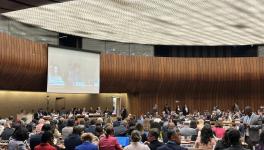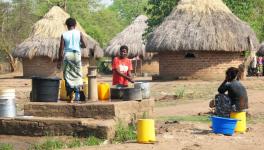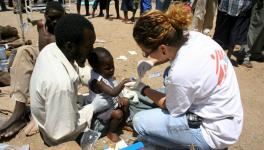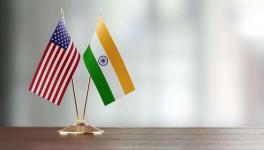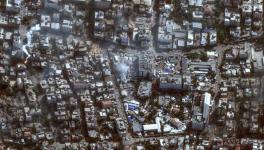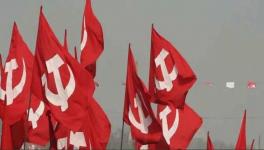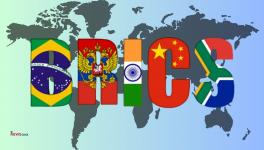Can Poor Countries Succeed in Vaccinating Their Population?
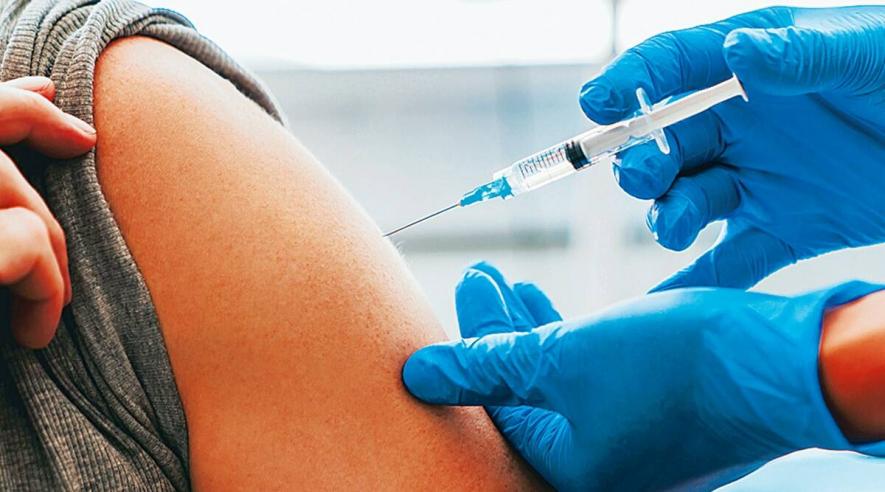
Representational Image. Image Courtesy: The Indian Express
Representatives from the Indian civil society have written a letter to Johnson & Johnson (J&J) and the President of the United States (US), Joe Biden. They demand that firstly, the J&J vaccine doses for COVID-19 made in India be supplied on priority to the Indian government, the African Union, and the COVAX Facility; secondly, the US has to lift intellectual property barriers and persuade J&J to license its vaccine, including technology and assistance, to manufacturers in other parts of the world.
The letter comes after the South African civil society’s recent success in pressuring J&J to make available the vaccine doses produced within South Africa domestically. In mid-August, the J&J shots bottled and packaged at African pharma company Aspen’s facility were reportedly being shipped over to Europe, which had already vaccinated more than 60% of its population. The huge public outcry eventually forced J&J to retain these doses for use in Africa only.
The vaccine inequality has been glaring and in fact, increasing with each passing day. Despite calls from the World Health Organisation (WHO) urging both the developed countries and the pharma companies, the supply of vaccines to countries in Africa and Asia has been severely limited. Africa has only about 3.8% of its population fully vaccinated, while the developed countries such as Canada have nearly 70% of their population fully vaccinated.
Monopoly of the Big Pharma & Counter Efforts
A few players still dominate the COVID-19 vaccine market – the Big Pharma monopolies such as Pfizer, Moderna, J&J and AstraZeneca. These Big Pharma companies and the developed world have colluded and successfully ensured that their profits are safe. They have stalled all efforts to pass the India-South Africa proposal at the World Trade Organisation to waive off intellectual property rights such as the patents and trademarks on COVID-19 related vaccines, drugs and therapeutics.
Countries such as Russia and Cuba made parallel efforts at developing COVID-19 vaccines. However, out of the three Russian and five Cuban vaccines, none have gotten the WHO approval. Some countries have given emergency approval to these vaccines. When Big Pharma is focusing on profits, Russia and Cuba have played an exemplary role. Not only have they given vaccines to poorer countries, but they have also shared the technical know-how with and provided scientific support to other manufacturers across the world. China, which has emerged as one of the biggest suppliers to some of the developing countries in Asia, has also been making impressive progress in developing vaccines with around five vaccine candidates. However, China has got approval for only two of its vaccines.
While India, which was considered the pharmacy of the world, had started supplying vaccines to other developing countries under the Vaccine Maitreyi programme, it abruptly stopped the exports in May, 2021, jeopardising vaccine programmes in these countries. There are indications that the export might resume, but effectively the vaccine production is still deficient, and India has been able to vaccinate only about 15% of its population fully. It is unlikely that the government will be able to reach its avowed target of vaccinating all adult populations by December 2021. As of September 20, India has recorded nearly 81 crore dosages of vaccinations, only about 36% of the target. As per our calculations, to fully vaccinate all adult populations (of around 94 crores) and including a fraction of vaccine wastage, India would need about 226 crore doses. At the current rate of vaccination, with only three-and-a-half months left, the target seems impossible.
Although the Indian government has been in talks with Moderna and Pfizer, there is uncertainty over any breakthrough. This is because these pharma companies have been pushing for an indemnity clause, which gives them security against any adverse effect of their vaccines resulting in loss or financial stress.
Recently, the Indian Foreign Secretary made a statement that India is “ready to partner with interested countries for the transfer of technology and manufacture of COVID-19 vaccines indigenously developed in India”. However, no concrete initiatives have emerged. In contrast, Russia has shared the technology with at least 34 other manufacturers worldwide, including Brazil and India. So has Cuba. Most recently, Cuba and Vietnam have entered into an agreement that Cuba will be sending Abdala – the Cuban COVID-19 vaccine – and a technology transfer team.
Looking for and Creating Alternatives
Now pushed to a corner, the developing world is trying to look for and develop alternatives to increase the vaccine supply for its population. Getting J&J to supply the doses being produced in South Africa to be used domestically was one way to secure some doses, but it was not sustainable. Developing countries are trying several ways through which they can overcome the problem of vaccine inequalities.
Producing J&J vaccine through existing capacity:
In India, after Covishield and Covaxin, the third vaccine added to the arsenal was Sputnik V, developed by the Russian Direct Investment Fund and global pharma Wockhardt Ltd. The RDIF has shared the technology with 34 manufacturers across the globe, including in India. However, the supply of Sputnik V has been tardy due to technological issues. In producing the two-dose Sputnik V vaccine, the manufacturers have to grow two different adenoviruses - Ad26 for the first dose and Ad5 for the second dose. The process for making the second dose is complex and has encountered glitches, affecting the overall supply of Sputnik V.
Interestingly, J&J’s single-dose vaccine uses the same adenovirus as is used in developing the first dose (Ad26) of the Sputnik V vaccine. The manufacturers, who have developed the production capacity for the Ad26 vector, say that, if allowed, these companies could reorient their processes to produce the J&J vaccine.
African Tech Transfer Hub:
In another development, there is reportedly an ongoing effort to develop an African base for COVID-19 vaccine production focusing on replicating Moderna’s vaccine. This is a WHO-sponsored tech transfer hub based in South Africa. The Moderna vaccine was taken up because Moderna had stated that it would not enforce patents related to its vaccine during the pandemic.
Experts point to the fact that such efforts take a lot of time to fructify. Prof. Satyajit Rath, Immunologist at Indian Institute of Science Education and Research (IISER), Pune, says that as the RNA-based vaccine manufacture technology is new, tech transfer help will be needed and the local industry will require hand-holding for setting it up, which might not be forthcoming from Moderna.
Pointing to a major issue involved, he says, “RNA vaccines need ultra-low temperature storage (-70 degree Celsius), and neither Moderna nor BioNTech-Pfizer has so far indicated that their vaccine storage conditions have changed. It is quite unlikely that such a condition can be fulfilled on a large scale of vaccination anywhere in the Global South. So, it is reasonable to wonder why there is such a push to make these vaccines for the Africa hub.”
Some researchers also opine that the vaccine candidates in clinical trials, such as the protein-subunit vaccines, will be easier to license and make in the Global South as many companies are pretty familiar with the process.
The crucial question in such a scenario is which of the vaccine technologies would be easier to implement in the Global South. As Prof. Rath puts it, “This question has a pure tech component and an IP-related component. The DNA vaccine technology, used by Zydus-Cadila, may well be less difficult to transfer in a decentralised fashion to manufacturers in the Global South as it does not depend on an uncertain supply chain of new components (unlike the RNA technologies), or on the somewhat demanding step of tissue culture of human cell lines (unlike the adenoviral technologies), or on the somewhat finicky process of making sure that the ‘shape’ of the vaccine product is quite correct (unlike the protein-based technologies).” The other probable technology, according to Prof. Rath, which can be feasible in this context is the protein-based one, which is traditional and familiar to manufacturers, “and is as easy as the DNA-based one, except for the little worry about protein shape-folding”.
In a recent media briefing, the global pharma companies claimed that even with western countries providing booster shots to their population, nearly 500 million doses would be available for redistribution by September-end from the US, the UK, the European Union, and Canada, among others. While global Big Pharma is fine with such token steps, when it comes to transferring technology, they argue that it requires time to train a workforce to produce new and complex products!
The negotiations on the India-South Africa waiver proposal have been virtually stalled. Most of the Big Pharma companies, which received substantial research and development funding for the development of vaccines, have refused to waive off the patents on COVID-19 vaccines.
In such a scenario, the civil society activists in India legitimately argue that J&J received federal funding of about USD 1 billion from the US government and is thus accountable to it. According to them, “If the US President is indeed serious about vaccinating the world, his administration has the moral, legal, and if necessary, financial power to lift intellectual property barriers and persuade J&J to license its vaccine, with technology and assistance included, to every manufacturer currently engaged in making the Sputnik-V vaccine.”
Given the strong lobby of the Big Pharma and the collusion between these and the rich, developed country governments, the journey to increase the vaccination rate in the poorer developing countries remains an arduous task. One only hopes that such continued efforts by civil society activists would help make an impact.
Get the latest reports & analysis with people's perspective on Protests, movements & deep analytical videos, discussions of the current affairs in your Telegram app. Subscribe to NewsClick's Telegram channel & get Real-Time updates on stories, as they get published on our website.










